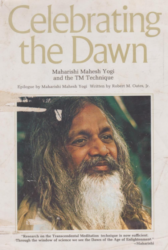Press Delete on Women’s Five Top Health Concerns

I checked with Amy Ruff, BSN, RN, WOCN, to learn how the practice of the TM technique reduces the risk factors for, onset of, or difficulties that come along with the five top health concerns of women: heart disease, breast cancer, osteoporosis, depression, and autoimmune diseases.
Janet Hoffman: Health professionals say that it is vital to be alert to our state of health and to be proactive in prevention. Prevention is a lot less painful and less expensive than medical or surgical treatment for disease, and good health is always preferable to falling ill. How does learning the TM technique allow a woman to prevent heart disease?
Amy Ruff: There is no question that science and medicine recognize the connection of mind and body. Simply stated, the TM technique is a very natural and effortless meditation technique practiced for 20 minutes twice daily while sitting comfortably with eyes closed. It’s a simple procedure that settles the mind down to finer states of thought until the mind experiences restful alertness—the mind is silent but awake. This state has the characteristics of brain wave coherence and deep physiological rest which allow the nervous system to throw off stress, fatigue, and dysfunction in mind and body.
Of all of the cardiac risk factors, stress has barely been discussed, because health professionals—until the research on the TM technique was done—hadn’t known how to rid the body of stress.
A study published in 2012 in the American Heart Association journal Circulation1 showed a 48% reduction in heart attack, stroke and all-cause mortality in a group practicing the TM technique compared to a group participating in common lifestyle modification (diet, exercise, smoking cessation, general relaxation). In addition, the American Heart Association, after reviewing all available research on alternative methods to treat cardiovascular disease and hypertension, developed a consensus statement that included:2
“….alternative treatments that include the Transcendental Meditation technique are recommended for consideration in treatment plans for all individuals with BP 120/80 or higher.”
Many of the 360 peer reviewed research studies documenting the benefits of TM specifically address the prevention of heart disease.
JH: Breast cancer is the most common cancer in women. Our last blog post discussed that gender and aging are two significant risk factors for breast cancer. Women become highly emotional at even the thought of the disease and the anxiety, loss of quality of life, and depression that come with dealing with breast cancer are significant. Please tell us about the benefits of TM practice in this arena.
AR: Stress is a major risk factor in the development of any disease. The anxiety and depression that accompany diagnosis and treatment of a major disease is a risk factor for further illnesses as well as decreased quality of life.
A meta-analysis3 compared all self-help techniques on which trait anxiety had been studied—a study of 146 independent outcomes. Methods included in the meta-analysis were the Transcendental Meditation technique, Progressive Muscle Relaxation, Concentration Meditation, Mantra Meditation, EMG biofeedback, and placebo techniques. The TM program showed more than twice the reduction of trait anxiety as all other techniques. The other techniques showed no better results in reducing anxiety than a placebo with the exception of concentration meditation, which was actually less effective than a placebo.
Other meta-analysis studies have been published showing reduced anxiety, depression, and alcohol and drug use for those practicing the TM technique. As I wrote in my last blog post on this site, Integrative Cancer Therapies published research data indicating that women with breast cancer experienced reduced stress, improved mental health, and increased emotional well-being as a result of practicing the TM technique.
JH: According to theNational Osteoporosis Foundation, osteoporosis threatens approximately 30 million American women. It is commonly asserted that adequate calcium consumption and weight-bearing physical activity are important to prevent this disease. But the body has its own inherent healing and balancing mechanisms, so your body will do what it can to repair bone damage. How does the regular practice of Transcendental Meditation enliven this intelligent healing function in the body?
AR: The body does have inner intelligence that allows us to heal. Disease arises from a lack of integration of the various systems within the body. Practicing the Transcendental Meditation technique triggers a set of adoptive responses at a variety of levels – cortical, autonomic, neuroendocrine and cardiovascular – this, in turn, enlivens self-repair and restores homeostasis. That’s why TM practice is able to produce the results that it does.
The NIH has awarded over 24 million dollars to research the effects of the TM program on health.
JH: According to the National Institute of Mental Health, approximately 12 million women are affected by some depressive disorder any given year compared to only 6 million men—women are more vulnerable to this debilitating problem. There is a lot of anecdotal evidence that TM decreases depression, but is there also published research about this?
AR: Depression is a silent disease in many cases, and women, because of our multiple roles, are at high risk. The state of restful alertness allows the mind and body to experience fulfillment and inner happiness. This experience carries over into activity. There are chemical changes in the blood indicating reduced anxiety and depression during TM practice.
A meta-analysis4 of 51 studies of different meditation techniques consisting of more than 9,700 research subjects and 400 outcome findings showed a significantly larger effect size from the Transcendental Meditation program compared to other forms of meditation on psychological measures including depression.
JH: The American Autoimmune Related Diseases Association reports that about 75% of autoimmune diseases occur in women. Diabetes, thyroid disease, and lupus are the most common and well-known. Currently a study on HIV and the TM program is being conducted with the San Francisco AIDS Foundation, with 150 staff and clients having been instructed in the TM technique. Can you explain the principle behind what could stop the body of a TM meditator from attacking itself?
AR: As I mentioned, the body has inner intelligence that corrects imbalances. For example, it regulates blood sugar, flow of blood to various parts of the body, and maintains our internal temperature. The deep rest and improved brain functioning during TM allow that inner intelligence to be more enlivened. Deeply rooted stresses are released, and homeostasis is returned to the body. Regular practice of the TM technique stabilizes the homeostasis, balance, and benefits in our daily lives.
JH: Any remarks you would like to make in summary?
AR: This one simple effortless technique, easy to learn and enjoyable to practice, is something that we can easily add to our lives, not only to help with and prevent daily stresses and challenges, but to enliven the body’s inner intelligence to reduce and avert disease. This is how one simple method can affect a wide variety of illnesses. The TM technique is our best preventive strategy for disallowing disease and for fulfillment in all areas of life.
NIMH researcher, author, and psychiatrist Dr. Norman Rosenthal said, “…if a pharmaceutical company had a pill which was capable of doing all of these things, and they had all these studies that showed how much help it could give—that pill would be a billion dollar blockbuster.”
References
- Robert Schneider, MD, FACC, et al., Stress Reduction in the Secondary Prevention of Cardiovascular Disease, Circulation: Cardiovascular Quality and Outcomes, 5: 750-758, 2012.
- Brook RD et al., Beyond Medications and Diet: Alternative Approaches to Lowering Blood Pressure. A Scientific Statement from the American heart Association. Hypertension, 61:00,2013.
- Eppley, K., Abrams, A., Shear, J. (1989). Differential effects of relaxation techniques on trait anxiety: a meta-analysis. Journal of Clinical Psychology, 45 (6): 957–974.
- Ferguson, P. C. An integrative meta-analysis of psychological studies investigating the treatment outcomes of meditation techniques. (1981). Doctoral thesis, School of Education, University of Colorado, Boulder, Colorado, U.S.A. Reprinted in part in: Chalmers, R. A., Clements, G., Schenkluhn, H., and Weinless, M., (Eds.) (1989). Scientific research on Maharishi’s Transcendental Meditation and TM-Sidhi program: Collected Papers, Vol. 3. Paper 272, pp. 2039 – 2048. Vlodrop, Netherlands: MVU Press.
About the Author
Janet Hoffman is the executive director of TM for Women Professionals, a division of TM for Women in the USA





